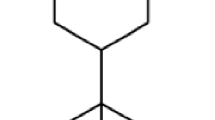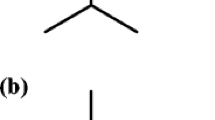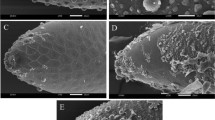Abstract
In latest years, the importance of the Melaleuca alternifolia essential oil (EO) has been greatly empathised due to its anti-microbial and anti-inflammatory effects, as well as to its toxic properties towards many arthropods of great medical and veterinary importance. In this research, the EO extracted from aerial parts of M. alternifolia was evaluated for its toxicity against larvae of the most invasive mosquito worldwide, Aedes albopictus (Diptera: Culicidae), and towards adults of the water flea, Daphnia magna (Cladocera: Crustacea), a non-target aquatic organism that share the same ecological niche of A. albopictus. The chemical composition of M. alternifolia EO was investigated by GC-MS analysis. Tea tree EO was mainly composed by oxygenated monoterpenes, with 1,8-cineole as the major constituent. M. alternifolia EO exerted toxic activity against A. albopictus larvae, with a LC50 = 267.130 ppm. However, this EO had a remarkable acute toxicity also towards adults of the non-target arthropod D. magna, with a LC50 = 80.636 ppm. This research provide useful information for the development of newer and safer mosquito control tools, highlighting that the non-target effects against aquatic organisms that share the same ecological niche of A. albopictus larvae are crucial in the development of ecofriendly mosquito control strategies. Further research is needed to investigate the chronic and/or reproductive toxicity of M. alternifolia EO both towards target and non-target aquatic arthropods.

Similar content being viewed by others
References
Adams RP (1995) Identification of essential oil components by gas chromatography-mass spectroscopy. Allured, Carol Stream
Altman PM (1988) Australian tea tree oil. Aust J Pharm 69:276–278
Amer A, Mehlhorn H (2006a) Larvicidal effects of various essential oils against Aedes, Anopheles, and Culex larvae (Diptera, Culicidae). Parasitol Res 99:466–472
Amer A, Mehlhorn H (2006b) Repellency effect of forty-one essential oils against Aedes, Anopheles and Culex mosquitoes. Parasitol Res 99:478–490
Benedict MQ, Levine RS, Hawley WA, Lounibos LP (2007) Spread of the tiger: global risk of invasion by the mosquito Aedes albopictus. Vect Bor Zoon Dis 7:76–85
Benelli G, Flamini G, Canale A, Cioni PL, Conti B (2012a) Toxicity evaluation of different essential oil formulations against the Mediterranean fruit fly Ceratitis capitata (Wiedemann) (Diptera Tephritidae). Crop Prot 42:223–229
Benelli G, Flamini G, Canale A, Molfetta I, Cioni PL, Conti B (2012b) Repellence of Hyptis suaveolens L. (Lamiaceae) whole essential oil and major constituents against adults of the granary weevil Sitophilus granarius (L.) (Coleoptera: Dryophthoridae). Bull Insectol 65:177–183
Benelli G, Flamini G, Fiore G, Cioni PL, Conti B (2013a) Larvicidal and repellent activity of the essential oil of Coriandrum sativum L. (Apiaceae) fruits against the filariasis vector Aedes albopictus Skuse (Diptera: Culicidae). Parasitol Res 112:1155–1161
Benelli G, Canale A, Flamini G, Cioni PL, Demi F, Ceccarini L, Macchia M, Conti B (2013b) Biotoxicity of Melaleuca alternifolia (Myrtaceae) essential oil against the Mediterranean fruit fly, Ceratitis capitata (Diptera: Tephritidae), and its parasitoid Psyttalia concolor (Hymenoptera: Braconidae). Ind Crop Prod 50:596–603
Callander JT, James PJ (2012) Insecticidal and repellent effects of tea tree (Melaleuca alternifolia) oil against Lucilia cuprina. Vet Parasitol 184:271–278
Caminade C, Medlock JM, Ducheyne E, McIntryre KM, Leach S, Baylis M, Morse A (2012) Suitability of European climate for the Asian tiger mosquito Aedes albopictus: recent trends and future scenarios. J R Soc Interface 9:2708–2717
Canale A, Benelli G, Conti B, Lenzi G, Flamini G, Francini A, Cioni PL (2013) Ingestion toxicity of three Lamiaceae essential oils incorporated in protein baits against the olive fruit fly, Bactrocera oleae (Rossi) (Diptera Tephritidae). Nat Prod Res in press
Carson CF, Riley TV (1993) A review: antimicrobial activity of the essential oil of Melaleuca alternifolia. Lett Appl Microbiol 16:49–55
Carson CF, Hammer KA, Riley TV (2006) Melaleuca alternifolia (tea tree) oil: a review of antimicrobial and other medicinal properties. Clin Microbiol Rev 19:50–62
Choi WI, Lee EH, Choi BR, Park HM, Ahn YJ (2003) Toxicity of plant essential oils to Trialeurodes vaporariorum (Homoptera: Aleyrodidae). J Econ Entomol 96:1479–1484
Choi WS, Park BS, Lee YH, Jang DY, Yoon EY, Lee SE (2006) Fumigant toxicities of essential oils and monoterpenes against Lycoriella mali adults. Crop Prot 25:398–401
Conti B, Canale A, Bertoli A, Gozzini F, Pistelli L (2010) Essential oil composition and larvicidal activity of six Mediterranean aromatic plants against the mosquito Aedes albopictus (Diptera: Culicidae). Parasitol Res 107:1455–1462
Conti B, Benelli G, Flamini G, Cioni PL, Profeti R, Ceccarini L, Macchia M, Canale A (2012a) Larvicidal and repellent activity of Hyptis suaveolens (Lamiaceae) essential oil against the mosquito Aedes albopictus Skuse (Diptera: Culicidae). Parasitol Res 110:2013–2021
Conti B, Benelli G, Leonardi M, Afifi UF, Cervelli C, Profeti R, Pistelli L, Canale A (2012b) Repellent effect of Salvia dorisiana, S. longifolia and S. sclarea (Lamiaceae) essential oils against the mosquito Aedes albopictus Skuse (Diptera: Culicidae). Parasitol Res 111:291–299
Conti B, Leonardi M, Pistelli L, Profeti R, Ouerghemmi I, Benelli G (2013) Larvicidal and repellent activity of essential oils from wild and cultivated Ruta chalepensis L. (Rutaceae) against Aedes albopictus Skuse (Diptera: Culicidae), an arbovirus vector. Parasitol Res 112:991–999
Davies NW (1990) Gas chromatographic retention indices of monoterpenes and sesquiterpenes on methyl silicon and carbowax 20M phases. J Chromatogr 503:1–24
Eamsobhana P, Yoolek A, Kongew W, Lerdthusnee N, Parsartvit A, Malainual N, Yong H (2009) Laboratory evaluation of aromatic essential oils from thirteen plant species as candidate repellents against Leptrombidium chiggers (Acari: Trombiculidae), the vector of scrub typhus. Exp Appl Acarol 47:257–262
Elango G, Rahuman AA, Kamaraj C, Bagavan A, Zahir AA (2011) Efficacy of medicinal plant extracts against malarial vector, Anopheles subpictus Grassi. Parasitol Res 108:1437–1445
Giatropoulos A, Pitarokili D, Papaioannou F, Papachristos DP, Koliopoulos G, Emmanouel N, Tzakou O, Michaelakis A (2013) Essential oil composition, adult repellency and larvicidal activity of eight Cupressaceae species from Greece against Aedes albopictus (Diptera: Culicidae). Parasitol Res 112:1113–1123
Gleiser RM, Bonino MA, Zygadlo JA (2011) Repellence of essential oils of aromatic plants growing in Argentina against Aedes aegypti. Parasitol Res 108:69–78
Govindarajan M, Sivakumar R (2012) Adulticidal and repellent properties of indigenous plant extracts against Culex quinquefasciatus and Aedes aegypti (Diptera: Culicidae). Parasitol Res 110:1607–1620
Govindarajan M, Mathivanan T, Elumalai K, Krishnappa K, Anandan A (2011) Mosquito larvicidal, ovicidal, and repellent properties of botanical extracts against Anopheles stephensi, Aedes aegypti and Culex quinquefasciatus (Diptera: Culicidae). Parasitol Res 109:353–367
Hafeez F, Akram W, Shaalan EA (2011) Mosquito larvicidal activity of citrus limonoids against Aedes albopictus. Parasitol Res 109:221–229
Halbert SE, Corsini D, Wiebel M, Vaughn SF (2009) Plant-derived compounds and extracts with potential as aphid repellents. Ann Appl Biol 154:303–307
Hammer KA, Carson CF, Riley TV, Nielsen JB (2006) A review of the toxicity of Melaleuca alternifolia (tea tree) oil. Food Chem Toxicol 44:616–625
Heukelbach J, Canyon DV, Oliveira FA, Muller R, Speare R (2008) In vitro efficacy of over-the-counter botanical pediculicides against the head louse Pediculus humanus var capitis based on a stringent standard for mortality assessment. Med Vet Entomol 22:264–272
Hummelbrunner LA, Isman MB (2001) Acute, sublethal, antifeedant, and synergistic effects of monoterpenoid essential oil compounds on the tobacco cutworm, Spodoptera litura (Lep., Noctuidae). J Agric Food Chem 49:715–720
Iori A, Grazioli D, Gentile E, Marano G, Salvatore G (2005) Acaricidal properties of the essential oil of Melaleuca alternifolia Cheel (tea tree oil) against nymphs of Ixodes ricinus. Vet Parasitol 129:173–176
James PJ, Callander JT (2012) Dipping and jetting with tea tree (Melaleuca alternifolia) oil formulations control lice (Bovicola ovis) on sheep. Vet Parasitol 189:338–343
Jennings W, Shibamoto T (1980) Qualitative analysis of flavour and fragrance volatiles by glass capillary chromatography. Academic, New York
Kikuchi K, Sasaki Y, Wakabayashi M (2000) Screening of organophosphate insecticide pollution in water by using Daphnia magna. Ecotoxicol Environ Saf 47:239–245
Kim SI, Hwan Yi SH, Tak JH, Ahn YJ (2004) Acaricidal activity of plant essential oils against Dermanyssus gallinae (Acari: Dermanyssidae). Vet Parasitol 120:297–304
Klun JA, Khrimian A, Debboun M (2006) Repellent and deterrent effects of SS220, Picaridin and Deet suppress human blood feeding by Aedes aegypti, Anopheles stephensi and Phlebotomus papatasi. J Med Entomol 43:34–39
Koliopoulos G, Pitarokili D, Kioulos E, Michaelakis A, Tzakou O (2010) Chemical composition and larvicidal evaluation of Mentha, Salvia and Melissa essential oils against the West Nile virus mosquito Culex pipiens. Parasitol Res 107:327–335
Lapied B, Pennetier C, Apaire-Marchais V, Licznar P, Corbel V (2009) Innovative applications for insect viruses: towards insecticide sensitization. Trends Biotechnol 4:190–198
LeBlanc GA (1980) Acute toxicity of priority pollutants to water flea (Daphnia magna). Bull Environ Contam Toxicol 24:684–691
Lee S, Tsao R, Peterson C, Coats JR (1997) Insecticidal activity of monoterpenoids to western corn rootworm (Coleoptera: Chrysomelidae), twospotted spider mite (Acari: Tetranychidae), and house fly (Diptera: Muscidae). J Econ Entomol 90:883–892
Lee BH, Choi WS, Lee SE, Park BS (2001) Fumigant toxicity of essential oils and their constituent compounds towards the rice weevil, Sitophilus oryzae (L.). Crop Prot 20:317–320
Maguranyi SK, Webb CE, Mansfield S, Russell RC (2009) Are commercially available essential oils from Australian native plants repellent to mosquitoes? J Am Mosq Control Assoc 25:292–300
Marking LL, Rach JJ, Schreier TM (1994) Evaluation of antifungal agents for fish culture. Prog Fish Cult 56:225–231
Masetti A, Maini S (2006) Arm in cage tests to compare skin repellents against bites of Aedes albopictus. Bull Insectol 59:157–160
Massada Y (1976) Analysis of essential oils by gas chromatography and mass spectrometry. Wiley, New York
Mathew N, Anitha MG, Bala TSL, Sivakumar SM, Narmadha R, Kalyanasundaram M (2009) Larvicidal activity of Saraca indica, Nyctanthes arbor-tristis and Clitoria ternatea extracts against three mosquito vector species. Parasitol Res 104:1017–1025
McCage CM, Ward SM, Paling CA, Fisher DA, Flynn PJ, McLaughlin JL (2002) Development of a paw paw herbal shampoo for the removal of head lice. Phytomedicine 9:743–748
Mills C, Cleary BJ, Gilmer JF, Walsh JJ (2004) Inhibition of acetylcholinesterase by tea tree oil. J Pharm Pharmacol 56:375–379
Noudjou F, Kouninki H, Ngamo LST, Maponmestsem PM, Ngassoum M, Hance T, Haubruge E, Malaisse F, Marlier M, Lognay GC (2007) Effect of site location and collecting period on the chemical composition of Hyptis spicigera Lam. An insecticidal essential oil from North-Cameroon. J Essent Oil Res 19:597–601
Park HM, Kim J, Chang KS, Kim BS, Yang YJ, Kim GH, Shin SC, Park IK (2011) Larvicidal activity of Myrtaceae essential oils and their components against Aedes aegypti, acute toxicity on Daphnia magna, and aqueous residue. J Med Entomol 48:405–410
Paupy C, Delatte H, Bagny L, Corbel V, Fontenille D (2009) Aedes albopictus, an arbovirus vector: from the darkness to light. Microbiol Infect 11:1177–1185
Pavela R (2009) Larvicidal property of essential oils against Culex quinquefasciatus Say (Diptera: Culicidae). Ind Crop Prod 30:311–315
Pushpanathan T, Jebanesan A, Govindarajan M (2006) Larvicidal, ovicidal and repellent activities of Cymbopogan citrates Stapf (Graminae) essential oil against the filarial mosquito Culex quinquefasciatus (Say) (Diptera: Culicidae). Trop Biomed 23:208–212
Rajkumar S, Jebanesan A (2005) Repellency of volatile oils from Moschosma polystachyum and Solanum xanthocarpum against filarial vector Culex quinquefasciatus Say. Trop Biomed 22:139–142
Robert LL, Olson JK (1989) Susceptibility of female Aedes albopictus from Texas to commonly used adulticides. J Am Mosq Control Assoc 5:251–253
Rutherford T, Nixon R, Tam M, Tate B (2007) Allergy to tea tree oil: retrospective review of 41 cases with positive patch tests over 4.5 years. Australas J Dermatol 48:83–87
Sammataro D, Degrandihoffman G, Needham G, Wardell G (1998) Some volatile plant oils as potential control agents for Varroa mites (Acari, Varroidae) in honey bee colonies (Hymenoptera, Apidae). Am Bee J 138:681–685
Semmler M, Abdel-Ghaffar F, Al-Rasheid KAS, Mehlhorn H (2011) Comparison of the tick repellent efficacy of chemical and biological products originating from Europe and the USA. Parasitol Res 108:899–904
Seo SM, Park HM, Park IK (2012) Larvicidal activity of Ajowan (Trachyspermum ammi) and Peru Balsam (Myroxylon pereira) oils and blends of their constituents against mosquito, Aedes aegypti, acute toxicity on water flea, Daphnia magna and aqueous residue. J Agric Food Chem 60:5909–5914
Severini C, Romi R, Marinucci M, Rajmond M (1993) Mechanism of insecticide resistance in field populations of Culex pipiens from Italy. J Am Mosq Control Assoc 9:164–168
Shellie R, Marriott P, Cornwell C (2001) Application of comprehensive two-dimensional gas chromatography (GC × GC) to the enantioselective analysis of essential oils. J Sep Sci 24:823–830
Skuse F (1894) The banded mosquito of Bengal. Indian Mus Notes 3:20
Stenhagen E, Abrahamson S, McLafferty FW (1974) Registry of mass spectral data. Wiley, New York
Sudakin DL, Trevathan WR (2003) Deet: a review and update of safety and risk in the general population. J Toxicol Clin Toxicol 41:831
Swigar AA, Silverstein RM (1981) Monoterpenes. Aldrich Chem Comp, Milwaukee
Talbert R, Wall R (2012) Toxicity of essential and non-essential oils against the chewing louse, Bovicola (Werneckiella) ocellatus. Res Vet Sci 93:831–835
Veal L (1996) The potential effectiveness of essential oils as a treatment for head lice, Pediculus humanus capitis. Complement Ther Nurs Midwifery 2:97–101
Walton SF, McKinnon M, Pizzutto S, Dougall A, Williams E, Currie BJ (2004) Acaricidal activity of Melaleuca alternifolia (Tea Tree) oil in vitro sensitivity of Sarcoptes scabiei var hominis to terpinen-4-ol. Arch Dermatol 140:563–566
WHO (1981) Instruction for determining the susceptibility or resistance of mosquito larvae to insecticide. WHO/VBC/81.807. Control of Trpical Diseases, World Health Organisation, Geneva
Williamson EM, Priestley CM, Burgess IF (2007) An investigation and comparison of the bioactivity of selected essential oils on human lice and house dust mites. Fitoterapia 78:521–525
Yamany AS, Mehlhorn H, Adham FK (2012) Yolk protein uptake in the oocyte of the Asian tiger mosquito Aedes albopictus (Skuse) (Diptera: Culicidae). Parasitol Res 111:1315–1324
Acknowledgments
We would like to thank Angelo Canale (Department of Agriculture, Food and Environment, University of Pisa) for his insightful critical comments on an earlier version of the manuscript, Helen Romito (Sant’Anna School of Advanced Studies, Pisa) for proofreading, Riccardo Antonelli and Paolo Giannotti (Department of Agriculture, Food and Environment, University of Pisa) for providing the artworks.
Author information
Authors and Affiliations
Corresponding author
Rights and permissions
About this article
Cite this article
Conti, B., Flamini, G., Cioni, P.L. et al. Mosquitocidal essential oils: are they safe against non-target aquatic organisms?. Parasitol Res 113, 251–259 (2014). https://doi.org/10.1007/s00436-013-3651-5
Received:
Accepted:
Published:
Issue Date:
DOI: https://doi.org/10.1007/s00436-013-3651-5




